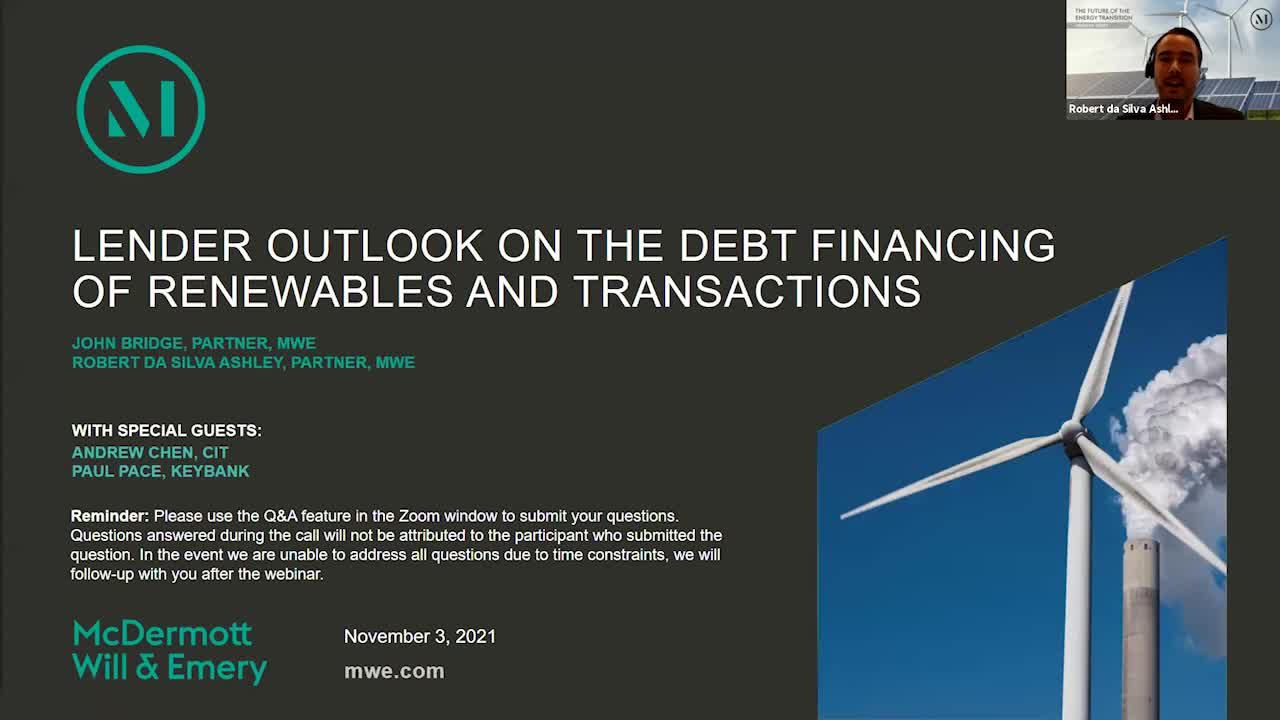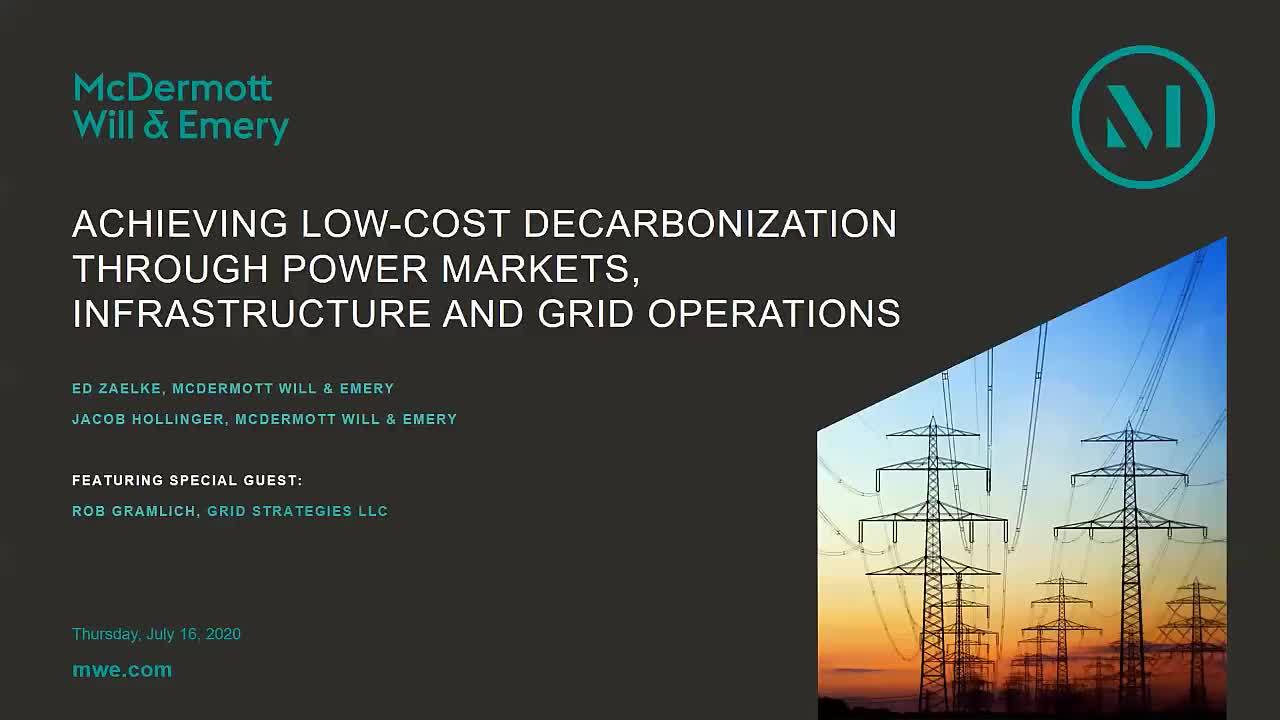During the latest webinar in our Energy Transition series, McDermott Partners Robert da Silva Ashley and John Bridge hosted Paul Pace, SVP and team leader at KeyBank, and Andrew Chen, managing director at CIT, to discuss the current outlook of leading lenders in the US renewables and transactions space. More specifically, they focused on lender outlook regarding the state of debt market support for the growing range of renewable power generation and clean energy infrastructure projects.

Below are key takeaways from the webinar:
1. The financing market for renewable projects remains extremely competitive, compressing pricing for lenders and driving innovations in financing structures with credit increasingly given to shorter tenured power purchased agreements (PPAs) and earlier merchant tails.
2. Current supply chain delays and inflationary pressures are creating significant stress. Solar panels and other major equipment are stuck in ports and sharp rises in project costs (insurance, labor wages, operations and maintenance, etc.) are starting to have a noticeable effect on the viability of certain project developments.
3. Lenders have been leaning heavily on client relationships with established track records of successful project developments, strong financial footing and credibility with industry counterparties helping to navigate the current challenges.
4. Environmental, Social and Governance (ESG) remains a focus for banking institutions driven by regulatory and environmental factors.
To access past webinars in this series and to begin receiving Energy updates, including invitations to the webinar series, please click here.
read more

 Subscribe
Subscribe

